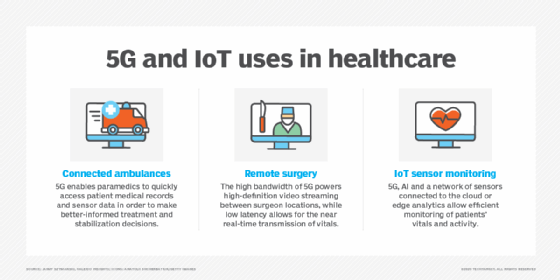What is the Department of Health and Human Services (HHS)?
The U.S. Department of Health and Human Services (HHS) is a cabinet-level agency in the executive branch of the federal government, tasked with protecting the health and well-being of all Americans.
Through policy leadership, program administration and public health innovation, HHS works to improve health outcomes and advance scientific progress in the U.S. Today, HHS remains one of the largest and most influential federal agencies, overseeing over $1 trillion in annual expenditures and administering more grant funding than any other federal agency.
Primary responsibilities of HHS
Through its network of specialized operating divisions, offices and agencies, HHS oversees programs and activities in public health, scientific research, social services, disease prevention, health policy, and healthcare quality and safety, among other duties.
Its most visible and significant areas of responsibility include the following:
- Administering Medicare and Medicaid.
- Leading national public health responses (e.g., pandemics, disease outbreaks and other public health emergencies).
- Regulating pharmaceuticals, medical devices and food safety.
- Advancing health information technology (health IT) and data interoperability.
- Supporting mental health and substance use services.
- Funding biomedical and behavioral research and innovation.
HHS operating divisions
HHS operates through 12 divisions, each focused on a specific area of healthcare or human services:
- Administration for Children and Families.
- Administration for Community Living.
- Administration for Strategic Preparedness and Response.
- Agency for Healthcare Research and Quality.
- Agency for Toxic Substances and Disease Registry.
- Centers for Disease Control and Prevention.
- Centers for Medicare and Medicaid Services (CMS).
- Food and Drug Administration (FDA).
- Health Resources and Services Administration.
- Indian Health Service.
- National Institutes of Health.
- Substance Abuse and Mental Health Services Administration.
Additionally, HHS oversees the U.S. Public Health Service Commissioned Corps, a uniformed service led by the U.S. Surgeon General that provides rapid response and medical expertise in public health emergencies.
Who leads HHS?
The current Secretary of Health and Human Services is Robert F. Kennedy Jr., who was appointed by President Donald Trump and confirmed by Congress in 2025. Under his leadership, HHS has redefined its priorities pursuant to the "Make America Healthy Again" (MAHA) initiative. While some areas of HHS' focus remain in flux under MAHA, Kennedy has articulated several definitive goals:
- Reducing the prevalence of chronic disease.
- Removing dyes and chemical additives from the food and water supply.
- Omitting candy, soft drinks and other ultra-high processed foods from schools and food assistance programs.
- Narrowing the scope of the FDA's "Generally Recognized as Safe" designation.
- Identifying and addressing the causes of autism spectrum disorder.
- Minimizing animal testing in drug development.
Outside of MAHA, Kennedy has directed HHS' resources to address two other high-priority concerns of the Trump administration:
- Combatting antisemitism on college campuses by withholding or rescinding federal research funding from universities determined to be noncompliant with the administration's antidiscrimination directives.
- Limiting or prohibiting access, particularly among pediatric patients, to transgender healthcare services using Medicaid and Children's Health Insurance Program (CHIP) coverage.
HHS and health information technology (health IT)
Through its network of agencies, HHS has played a foundational role in the delivery of health services, protection of public health and modernization of the healthcare ecosystem. As the second Trump administration seeks to reshape the focus of federal agencies, it remains unclear how much attention and resources HHS will continue to devote to these activities.
Over the years, key efforts have included the following:
- Providing guidance for healthcare application development.
- Issuing cybersecurity best practices for healthcare organizations.
- Supporting interoperability standards and health data sharing.
- Promoting adoption of electronic health records (EHR) and emerging technologies like artificial intelligence (AI) and blockchain in healthcare.

These responsibilities are supported by major offices within HHS, including CMS and the Assistant Secretary for Technology Policy/Office of the National Coordinator for Health IT (ASTP/ONC).
Centers for Medicare & Medicaid Services
CMS is a critical HHS agency responsible for overseeing the following programs and activities:
- Medicare (health insurance for adults age 65 and older and people with disabilities).
- Medicaid (health insurance for low-income individuals and families).
- CHIP.
- Health Insurance Portability and Accountability Act (HIPAA) enforcement.
- Clinical Laboratory Improvement Amendments standards.
In 2009, CMS was tasked with advancing health IT via the Health Information Technology for Economic and Clinical Health (HITECH) Act, including the implementation of EHR incentive programs, defining the meaningful use of certified EHR technology, drafting standards for the certification of EHR technology, and updating the health information privacy and security regulations under HIPAA.
Today, CMS continues to evolve its activities and priorities, including value-based care models, clinical health equity, and digital modernization of Medicare and Medicaid services. It has also dedicated considerable resources to fight fraud and abuse and waste in medical billing; under Secretary Kennedy, CMS has also focused heavily on reducing healthcare spending, including the elimination of reimbursement for non-medical expenses under Medicaid. Many of these efforts are being done in conjunction with ASTP/ONC, which also falls within HHS.
Assistant Secretary for Technology Policy/Office of the National Coordinator for Health Information Technology
Created in 2004 and formalized by the HITECH Act in 2009, the ASTP/ONC leads national efforts to build and maintain a coordinated, secure and patient-centered health IT infrastructure. Originally conceived as the Office of the National Coordinator for Health Information Technology, or ONC, it was renamed and restructured in 2024 to reflect an expanded focus on emerging technologies, interoperability and cybersecurity strategies.
ASTP's core priorities in 2025 include the following topics:
- Driving health data interoperability through the Trusted Exchange Framework and Common Agreement and the use of the United States Core Data for Interoperability.
- Enforcing anti-information blocking regulations under the 21st Century Cures Act.
- Ensuring patients have secure, convenient access to their electronic health records.
- Promoting ethical, effective and secure use of AI and machine learning in healthcare.
- Ensuring Certified Health Information Technology products conform with the capability, functionality and security requirements of the ONC Health IT Certification Program.
ASTP works collaboratively with CMS, state agencies and private-sector partners to ensure that patients, providers and payers can access and use health information effectively and securely.
HHS and healthcare cybersecurity
In response to the growing number of cyberattacks on healthcare organizations, HHS -- through its Administration for Strategic Preparedness and Response and Health Sector Cybersecurity Coordination Center -- has taken a more active role in supporting the security and resilience of health IT systems through the following activities:
- Issuing cybersecurity threat briefings and technical assistance.
- Providing incident response resources to hospitals and clinics.
- Encouraging adherence to National Institute of Standards and Technology (NIST) cybersecurity frameworks.
- Coordinating with the Cybersecurity and Infrastructure Security Agency (CISA) and HHS Office for Civil Rights on breach reporting and response.
In 2024, HHS announced new cybersecurity performance goals for hospitals, including mandatory minimum protections for critical systems by 2026. However, it remains unclear whether these goals will remain intact, as the second Trump administration has significantly reduced funding for or dismantled various cybersecurity efforts since taking office in 2025.
Explore top healthcare cybersecurity and privacy predictions. Learn about the largest healthcare data breaches of 2024, what can be learned from these healthcare cyberattacks and why healthcare data is often the target of ransomware attacks.





